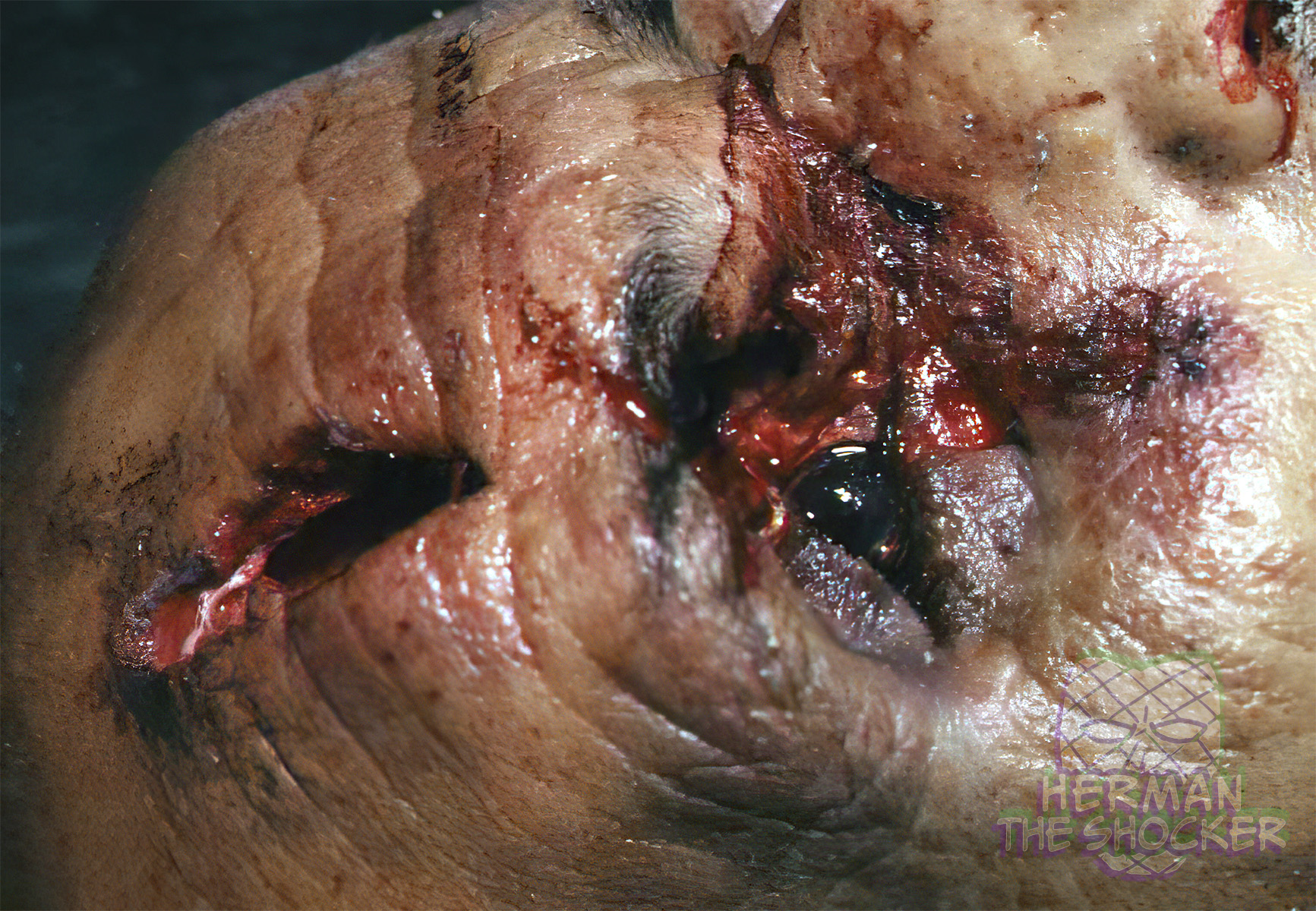In contact gunshot wounds with bony tissue underlying the injury, the injuries are typically called a stellate wound, where the gases exit the barrel before the projectile. As a result, the gas collides with the bone tissue, resulting in the reflection of the gases. This gas causes the expansion of subcutaneous space and pressure, which results in an explosive injury, tearing, and lacerating the skin and subcutaneous tissue, resulting in the stellate wound. Additionally, the expanding gases also cause a back-splatter of soft-tissue and blood onto the firearm and fingers.
‘Tattooing’ is pathognomonic for an intermediate range gunshot wound. Tattooing is a term used to describe the punctate abrasions observed when epithelial tissue comes into contact with partially burned or unburned grains of gunpowder. These punctate abrasions cannot be wiped away and will remain visible on the skin for several days. Clothing, hair or other intermediate barriers may prevent the powder grains from making contact with the skin.
Latest posts








